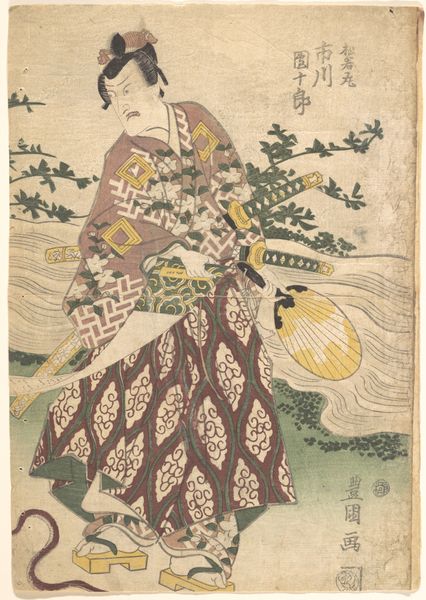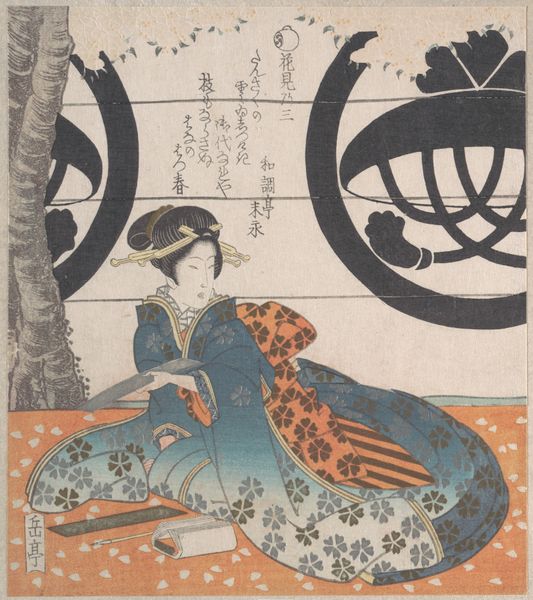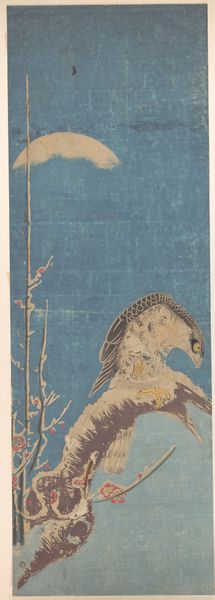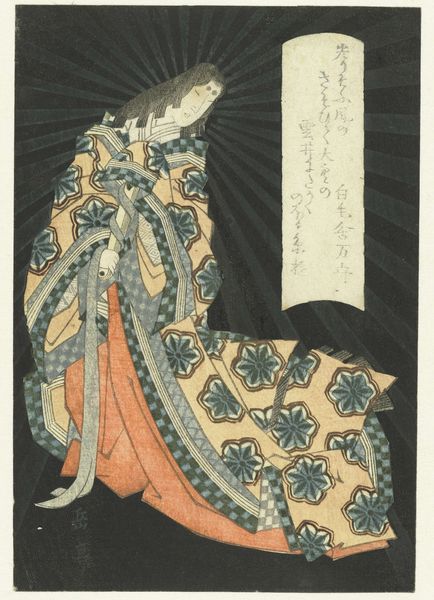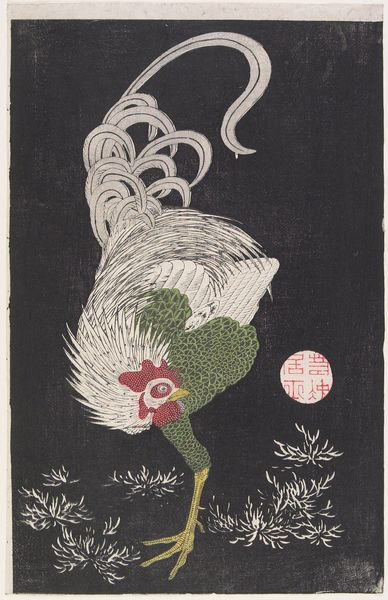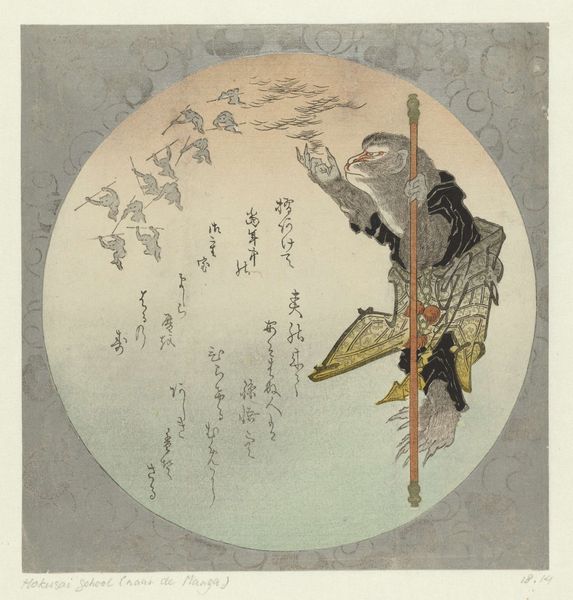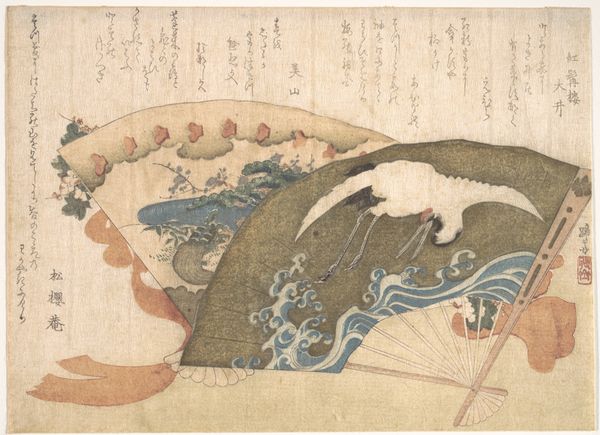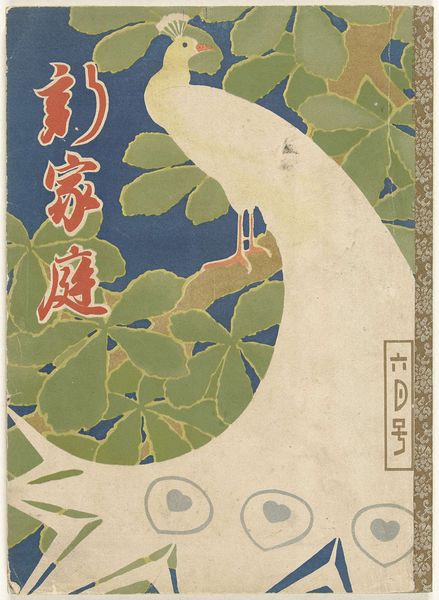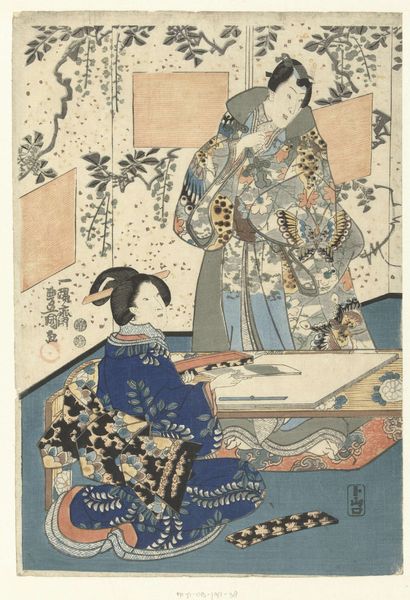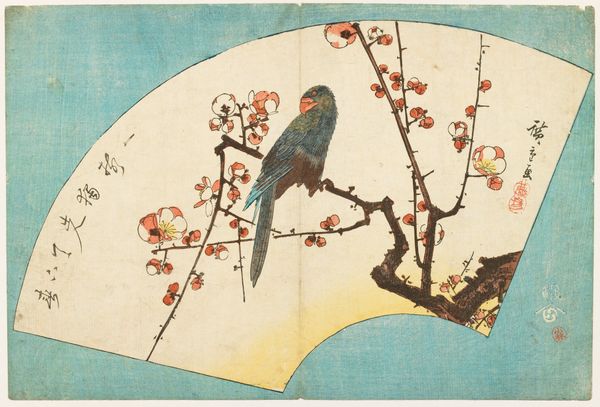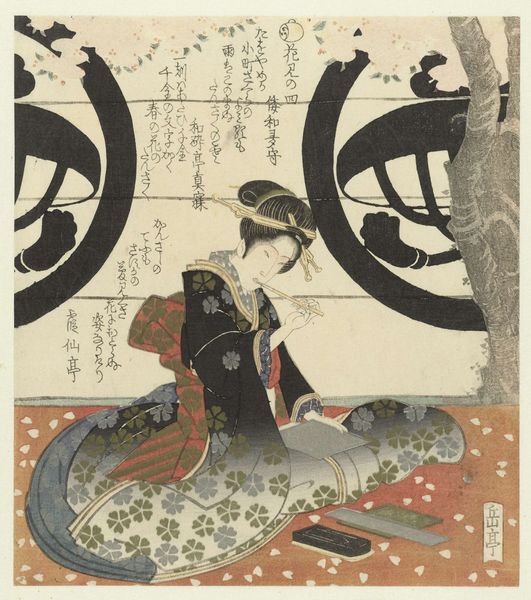
Dimensions: height 208 mm, width 180 mm
Copyright: Rijks Museum: Open Domain
Editor: So, this woodblock print, “De Komachi kersenbloesem” by Yashima Gakutei, was created sometime between 1868 and 1912. I’m struck by the detail in the kimono, and I'm curious, how would you approach interpreting a work like this? Curator: First, consider the process. Ukiyo-e prints like this were products of a highly collaborative, commercial system. Artists, woodblock carvers, printers, and publishers, all contributing their labor. Editor: Interesting. It makes you think about all the different hands involved in just one piece of art. Curator: Precisely. The print’s subject matter, a classical poem reference, speaks to a market eager for cultural refinement. But notice the materiality; inexpensive pigments, mass production, paper. Are these markers of 'high art'? Where do we place something created for widespread consumption, both reflecting and shaping cultural values through its means of production? Editor: So, it's less about the individual artist's genius and more about the collective production and the society it reflects? Curator: Exactly. The distribution channels also mattered; consider how these prints were sold, traded, and consumed. Thinking about these aspects helps to deconstruct traditional hierarchies that separate “art” from craft or commerce. Editor: That definitely gives me a new perspective. I'll look at these kinds of prints from a whole different angle now! Curator: Glad to hear it! It’s not just about the aesthetic experience; it’s about unraveling the economic and social forces at play.
Comments
No comments
Be the first to comment and join the conversation on the ultimate creative platform.
